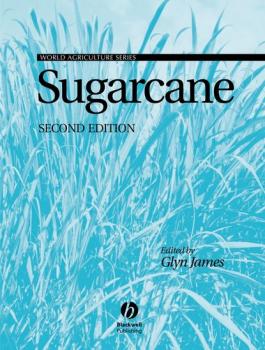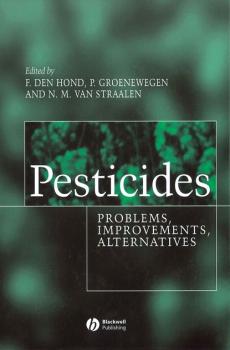Биология
Различные книги в жанре БиологияThe Fertilizer Encyclopedia
Fertilizers are key for meeting the world s demands for food, fiber, and fuel. Featuring nearly 4,500 terms of interest to all scientists and researchers dealing with fertilizers, The Fertilizer Encyclopedia compiles a wealth of information on the chemical composition of fertilizers, and includes information on everything from manufacturing and applications to economical and environmental considerations. It covers behavior in soil, chemical and physical characteristics, physiological role in plant growth and soil fertility, and more. This is the definitive, up-to-date reference on fertilizers. This book is not available for purchase from Wiley in the country of India. Customers in India should visit Vasudha Research & Publications Pvt. Ltd. at www.fertilizer-encyclopedia.com
Wheat
Wheat: Science and Trade is an up-to-date, comprehensive reference work designed to expand the current body of knowledge on this staple crop, incorporating new information made available by genetic advances, improvements in the understanding of wheat's biology, and changes in the wheat trade industry. Covering phylogeny and ontogeny, manipulation of the environment and optimal management, genetic improvement, and utilization and commercialization, the book focuses on the most economically significant diseases and impacts
Cocoa
The fourth edition of this highly regarded book has been considerably enlarged to cover all aspects of cocoa production. Higher prices for cocoa have led to much new knowledge about the plant and changes to its methods of production. These are discussed, along with new problems that have occurred and the fresh research projects that have been needed.
Coffee
Coffee, one of the most commercially important crops grown, is distributed and traded globally in a multi-million dollar world industry. This exciting new book brings together in one volume the most important recent developments affecting the crop. Contributions from around 20 internationally-respected coffee scientists and technologists from around the world provide a vast wealth of new information in the subject areas in which they are expert. The book commences with three cutting-edge chapters covering non-volatile and volatile compounds that determine the flavour of coffee. Chapters covering technology follow, including comprehensive information on developments in roasting techniques, decaffeination, the science and technology of instant coffee and home / catering beverage preparation. The physiological effects of coffee drinking are considered in a fascinating chapter on coffee and health. Agronomic aspects of coffee breeding and growing are covered specifically in chapters concentrating on these aspects, particularly focussing on newly-emerging molecular and cellular techniques. Finally, recent activities of some international organisations are reviewed in a lengthy appendix. The editors of Coffee: Recent Developments have drawn together a comprehensive and extremely important book that should be on the shelves of all those involved in coffee. The book is a vital tool for food scientists, food technologists and agricultural scientists and the commercially important information included in the book makes it a 'must have reference' to all food companies involved with coffee. All libraries in universities, and research stations where any aspect of the coffee crop is studied or taught should have copies of the book available. R. J. Clarke, also co-editor of the widely-acclaimed six-volume work Coffee published between 1985 and 1988, is a consultant based in Chichester U. K. O. G. Vitzthum, formerly Director of Coffee Chemistry Research worldwide at Kraft, Jacobs, Suchard in Bremen, Germany is Honorary Professor at the Technical University of Braunsweig, Germany and Scientific Secretary of the Association Scientifique Internationale du Cafe (ASIC), in Paris France.
Sugarcane
From enhancing the flavour of food to providing a substrate for fermentation, sugar is renowned worldwide for its importance as a commodity. For many centuries sugarcane has been cultivated and developed, and we now have a huge range of crop varieties. Based on Blackburn’s highly successful Sugarcane, originally published in 1984, this new edition has been fully revised and expanded by an international team of widely respected sugarcane specialists. Focussing on the agricultural aspects of the crop, this book follows a logical progression from the botany and breeding through to planning cultivation, control of weeds, pests and diseases, harvest management and payment for cane. An invaluable asset to those involved in planning or running sugar estates as well as small producers An easy-to-follow reference for students and agriculturalists alike Comprehensive reference sections and further reading
Pesticides
Over the last five decades pesticides have undoubtedly helped to increase agricultural production and control vectors of disease, however the environmental impact of long term agro-chemical use has been cause for concern along with the effects on human health. In Pesticides, Graham Matthews begins by looking at the developmental history of pesticides, and how crop protection was achieved before they were in use, how pesticides are registered for use and what happens to pesticides in food and the environment. Pesticide application and operator safety is investigated and the future of pesticides in light of the development of genetically modified crops is explored. Provides commercially important information for the agro-chemical industry Addresses all aspects of public concern relating to human health and the environment, including spray drift, bystander, resident and worker exposure Looks at the future of pesticides in light of the increasing prevalence of genetically modified crops Collecting together the most recent research in the area in a single volume, this book is a vital resource for agricultural scientists, agronomists, plant scientists, plant pathologists, entomologists, environmental scientists, public health personnel, toxicologists, crop protection personnel and all those involved in the agrochemical industry and government pesticide registration and legislation.
Rice
Thorough coverage of rice, from cultivar development to marketing Rice: Evolution, History, Production, and Technology, the third book in the Wiley Series in Crop Science, provides unique, single-source coverage of rice, from cultivar development techniques and soil characteristics to harvesting, storage, and germplasm resources. Rice covers the plant's origins and history, physiology and genetics, production and production hazards, harvesting, processing, and products. Comprehensive coverage includes: * Color plates of diseases, insects, and other production hazards * The latest information on pest control * Up-to-date material on marketing * A worldwide perspective of the rice industry Rice provides detailed information in an easy-to-use format, making it valuable to scientists and researchers as well as growers, processors, and grain merchants and shippers.
Pesticides
Despite a history of several decades of pesticide regulation, continuous innovation, and considerable practical experience with using pesticides in agriculture, the environmental impact of pesticide use continues to be of serious concern.
Sugar Beet
Sugar beet, alongside sugar cane, is the main source of sugar across the world. Grown widely in Europe, North and South America, Asia and parts of North Africa, the crop is at the core of a multi-billion dollar global industry. A. Philip Draycott has gathered 32 international experts to create this defining text, providing a comprehensive review of the latest research in a clear and accessible form, providing the reader with: Definitive account of this major world crop Coverage of all aspects of successful sugar beet growing Over 2,500 references from international literature Colour images to assist in the identification of sugar beet pests, diseases and nutrient deficiencies All those involved with the crop, including growers and processors, sugar beet and sugar organisations and society members will find this book to be an invaluable resource. Agricultural and plant scientists, food scientists and technologists and all libraries in research institutions where these subjects are studied and taught will find it a valuable addition to their shelves.
Livestock Biodiversity
Livestock biodiversity is integral to our culture, history, environment, economy and, most importantly, our future. Thousands of livestock breeds, from relatively small genetic pools, have evolved over time to suit particular environments and farming systems. This is both the result of natural processes and of human needs for specialized livestock – as our knowledge of genetics continues to increase we achieve a greater understanding of how this biodiversity evolved. This book offers a detailed and comprehensive overview of livestock biodiversity. It explores the history behind it, shows how livestock biodiversity can be utilized as animal genetic resources through breed development and by crossbreeding, examines the state of world livestock biodiversity today, and emphasizes the importance of conserving and developing the biodiversity of livestock. Special consideration is given to: • How livestock biodiversity arose and is maintained in relation to human society • How it can be used in sustainable agricultural development • How it can be conserved for the benefit of present and future generations • Why conservation biologists, as well as agriculturists, should be involved in its protection









